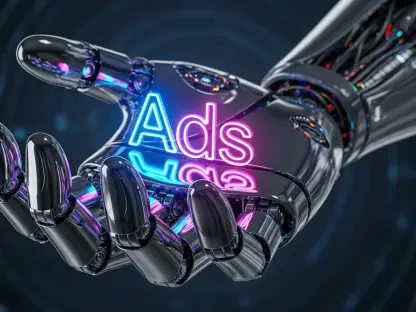Artificial intelligence (AI) has increasingly become a cornerstone in various sectors, and video production and marketing are no exceptions. With the rapid advancement and adoption of AI technologies, businesses are experiencing unprecedented efficiency and creativity in video content creation. The integration of AI has revolutionized the way marketers approach video production, offering new tools and methods that streamline processes and expand accessibility. According to Wistia’s 2025 State of Video Report, the adoption rate of AI in video creation has dramatically risen, making it a pivotal component in modern marketing strategies.
Advancements in Pre- and Post-Production
The integration of AI into pre- and post-production tasks has significantly enhanced the efficiency and quality of video production. Over 60% of marketers are either using or planning to incorporate AI for generating captions, showcasing the growing emphasis on accessibility. AI-generated captions have seen an impressive 572% growth in usage since 2021, illustrating their critical role in making content more accessible to audiences, including those with hearing impairments.
In addition to captions, AI is also being used extensively for voice dubbing and language translation. With 38% of marketers employing AI for voice dubbing and 31% for language translation, the technology aids in overcoming language barriers, thus widening the content’s reach to a global audience. These advancements enable businesses to maintain their brand voice and message consistently across different languages and regions, which is crucial for global marketing efforts. The focus on accessibility and linguistic diversity highlights how AI is not only improving the efficiency of video production but also ensuring that content is inclusive and far-reaching.
Challenges and Budgetary Considerations
Despite the impressive strides made with AI in video production, significant challenges remain that hinder further growth. Companies often grapple with limitations in size, resources, costs, and technical capabilities, which can impede their ability to fully leverage AI technologies. Even though there is a notable shift towards adopting AI, these constraints present considerable hurdles, particularly for smaller enterprises with limited budgets and technical expertise.
On the financial front, the report shows that 57% of marketers have increased their video budgets, driven by company goals and product launches. This investment highlights the belief in video marketing’s power and the potential returns it promises. However, it’s crucial to balance these investments against the operational costs and technical demands that come with integrating sophisticated AI tools. As businesses navigate these challenges, it becomes imperative to develop strategies that optimize available resources while maximizing the benefits of AI advancements.
Focus Areas and Viewer Engagement
The emphasis on AI-driven video production has prominently shaped the types of content being prioritized by marketers. Educational, product, and social media videos have emerged as the top focus areas for 2024, reflecting the demand for informative and engaging content across various platforms. These categories benefit greatly from AI technologies, which can enhance the production quality and ensure that content is tailored to meet specific audience needs.
In terms of viewer engagement, the metrics show that 34% of marketers concentrate on engagement rates while 29% monitor conversion rates. Notably, short videos, typically under one minute in length, achieve the highest average engagement rate at 50%. However, this doesn’t mean that longer videos are losing their appeal. Medium- and long-form videos continue to maintain strong engagement rates, demonstrating that when properly executed, they hold significant value. AI’s role in producing captivating content that retains viewer attention is evident, and marketers are continually exploring how to harness these tools for maximum impact.
The Future of AI in Video Marketing
Artificial intelligence (AI) has significantly transformed various industries, and video production and marketing are no different. As AI technologies quickly advance and are widely adopted, businesses are witnessing remarkable improvements in efficiency and creativity when creating video content. The integration of AI has fundamentally changed how marketers approach video production, introducing new tools and techniques that simplify processes and broaden accessibility. This evolution has enabled marketers to streamline various aspects of video creation, from planning and editing to distribution and analysis. According to Wistia’s 2025 State of Video Report, the rate at which AI is being incorporated into video creation has seen a substantial rise, establishing it as a critical element in contemporary marketing strategies. As AI continues to evolve, its role in video production is expected to expand even further, driving innovations that will shape the future of digital marketing.









